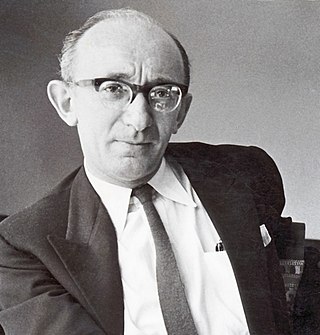Related Research Articles

Martha Argerich is an Argentine classical concert pianist. She is widely considered to be one of the greatest pianists of all time. Born and raised in Buenos Aires, Argerich gave her debut concert at the age of eight before receiving further piano training in Europe. At an early age, she won several competitions, including the VII International Chopin Piano Competition and the Ferruccio Busoni Competition and has since recorded numerous albums and performed with leading orchestras worldwide.

Artur Schnabel was an Austrian-born classical pianist, composer and pedagogue. Schnabel was known for his intellectual seriousness as a musician, avoiding pure technical bravura. Among the 20th century's most respected and important pianists, his playing displayed marked vitality, profundity and spirituality in the Austro-German classics, particularly the works of Beethoven and Schubert.

Sir Clifford Michael Curzon CBE was an English classical pianist.

Dame Mitsuko Uchida, is a Japanese-English classical pianist and conductor. Born in Japan and naturalised in England, she is particularly notable for her interpretations of Mozart and Schubert.

Leon Fleisher was an American classical pianist, conductor and pedagogue. He was one of the most renowned pianists and pedagogues in the world. Music correspondent Elijah Ho called him "one of the most refined and transcendent musicians the United States has ever produced".
Peter Frankl is a Hungarian-born British pianist. He mainly performs music from the Classical period, the Romantic period and the early Modern period. His recordings include the complete solo piano music of both Debussy and Schumann.

Geoffrey Peter Bede Hawkshaw Tozer was an Australian classical pianist and composer. A child prodigy, he composed an opera at the age of eight and became the youngest recipient of a Churchill Fellowship award at 13. His career included tours of Europe, America, Australia and China, where he performed the Yellow River Concerto to an estimated audience of 80 million people. Tozer had more than 100 concertos in his repertoire, including those of Mozart, Beethoven, Liszt, Brahms, Tchaikovsky, Medtner, Rachmaninoff, Bartók, Stravinsky, Prokofiev and Gerhard.

Ignat Aleksandrovich Solzhenitsyn is a Russian American conductor and pianist. He is the conductor laureate of the Chamber Orchestra of Philadelphia and the principal guest conductor of the Moscow Symphony Orchestra. He is the son of Russian author Aleksandr Solzhenitsyn.
Claude Frank was a German-born American pianist.
Terence Judd was an English pianist.

William Barry Douglas in Belfast, Northern Ireland, is a classical pianist and conductor.
Sergio Daniel Tiempo is a Venezuelan-Argentine classical pianist.

Maria Stader was a Hungarian-born Swiss lyric soprano, known particularly for her Mozart interpretations.

Simone Andrea Dinnerstein is an American classical pianist.

Great Pianists of the 20th Century was a 200-CD box set released by Philips Records in 1999 and sponsored by Steinway & Sons.
Arabesque Records is an American record company and label specializing in jazz and classical music.

Peter Diamand, CBE was an arts administrator and director of the Edinburgh International Festival from 1965 to 1978.
Inon Barnatan is an American/Israeli classical pianist.

Liza Ferschtman is a Dutch classical violinist who appears internationally, both as a soloist with orchestra and in chamber music. She received the Nederlandse Muziekprijs in 2006 and has directed the Delft Chamber Music Festival since 2007.
Lucille, Lady Curzon was a British-based American harpsichordist and student of the classical musicians Artur Schnabel, Wanda Landowska and Nadia Boulanger. She was the wife of classical pianist Sir Clifford Curzon.
References
- 1 2 3 4 5 6 7 8 9 10 11 12 13 14 15 16 Telegraph, 7 April 2009
- 1 2 3 4 5 6 7 Times Online, 25 April 2009
- 1 2 Liverpool Daily Post, 9 April 2009
- 1 2 3 4 5 6 7 8 9 10 11 12 13 14 15 16 17 18 19 20 21 22 23 24 The Guardian, 14 April 2009
- 1 2 Michael Church Archived 26 December 2009 at the Wayback Machine
- ↑ Winners, members of the jury and artistic guests, Paloma O’Shea Santander International Piano Competition
- ↑ International Piano Archived 25 November 2009 at the Wayback Machine
- ↑ WorldCat
- 1 2 3 Douglas Ashley, Classical Pianist
- ↑ College of Charleston, Music Department Archived 15 June 2010 at the Wayback Machine
- ↑ The Observer Archived 16 June 2011 at the Wayback Machine
- ↑ Hyperion Records
- ↑ Angela Brownridge Archived 14 August 2007 at the Wayback Machine
- ↑ Hyperion Records
- ↑ medici.tv
- ↑ Web Concert Hall Archived 11 March 2009 at the Wayback Machine
- ↑ "Inon Barnatan". New York Philharmonic. Retrieved 9 January 2015.
- ↑ The Petrie School of Music at Converse College Archived 29 April 2012 at the Wayback Machine